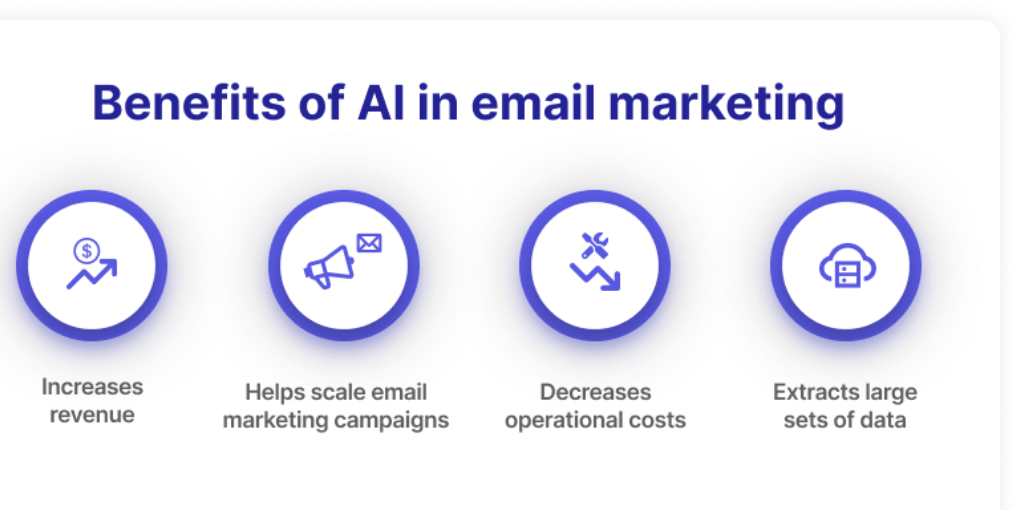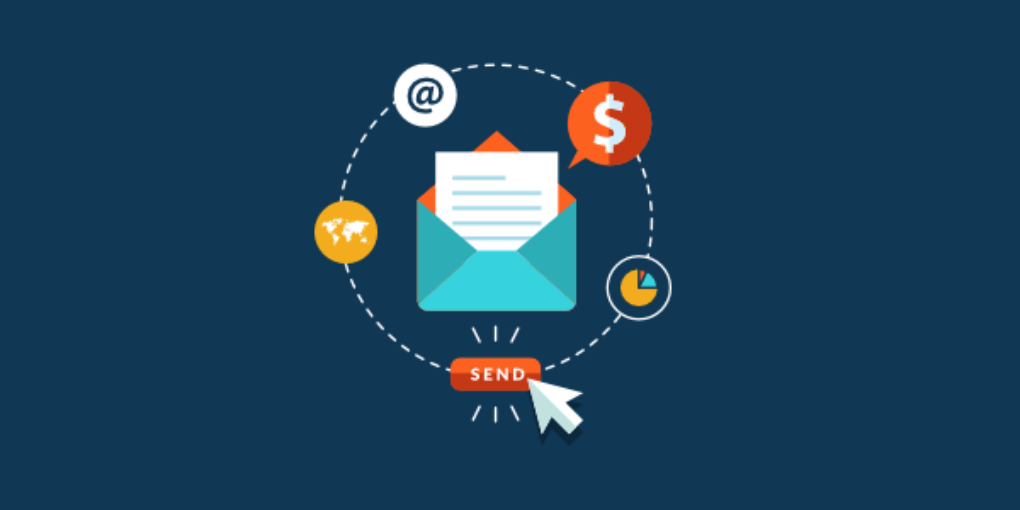Unlock the potential of AI content for email marketing and experience the benefits of increased open rates and click-through rates.
Learn how AI algorithms can analyze customer data to generate personalized email content that drives engagement and boosts ROI.

Email marketing has experienced a rapid transformation due to artificial intelligence (AI).
With the ability to generate content autonomously, AI provides marketers with a powerful tool to streamline their email marketing campaigns, enhance personalization, and drive engagement.
In this article, we will explore the world of AI-generated content for email marketing, its benefits, challenges, and best practices for implementation.
Understanding AI-generated content
AI-generated content refers to the process of using artificial intelligence technologies to create written content autonomously.
These technologies employ deep learning algorithms to analyze vast amounts of data and learn patterns, enabling them to generate human-like text.
In the context of email marketing, AI-generated content can include subject lines, preview text, email body content, and even call-to-action (CTA) elements.
Benefits of AI content for email marketing
Enhancing personalization and segmentation
Personalization is a key driver of email marketing success. AI-generated content enables marketers to deliver highly personalized emails by dynamically tailoring content based on recipient data, such as demographics, preferences, and behavior.
By incorporating AI, marketers can achieve granular segmentation and deliver targeted messages that resonate with individual recipients, driving higher open and click-through rates.
Streamlining the content creation process
Creating compelling email content is a time-intensive process. AI-generated content can automate and expedite this process by generating drafts, suggesting relevant phrases, or even composing full email drafts.
Marketers can leverage AI to quickly generate multiple variations of an email and perform A/B testing to determine the most effective content elements.
Improving email subject lines and preview text
Subject lines and preview text play a crucial role in determining whether recipients open an email or consign it to the depths of their inbox.
AI-generated content can help optimize these crucial elements by analyzing past performance data, identifying successful patterns, and generating subject lines and preview text that are more likely to capture recipients’ attention and pique their curiosity.
Optimizing email body content
The body of an email is where the main content resides. AI-generated content can analyze historical engagement data, including open and click-through rates, to understand what type of content resonates with the target audience.
With this knowledge, AI can generate persuasive and engaging email body content that drives conversions, whether it’s promoting a product, sharing educational content, or nurturing leads.
Overcoming Challenges and Limitations
While AI-generated content offers numerous benefits for email marketing, it’s important to acknowledge and address the challenges and limitations that may arise.

By understanding these challenges and implementing effective strategies, businesses can overcome them and maximize the potential of AI-generated content.
Let’s explore some common challenges and their corresponding solutions:
- Authenticity and Human Touch: One of the main challenges with AI-generated content is ensuring authenticity and maintaining a human touch. To overcome this, businesses can incorporate human review and editing into the content creation process. Human intervention helps refine the generated content, ensuring it aligns with the brand’s tone, style, and values. This collaborative approach combines the efficiency of AI with the expertise and creativity of humans.
- Bias and Discrimination: AI models can inadvertently incorporate biased or discriminatory language if not properly trained or if biased training data is used. To overcome this challenge, it’s crucial to train AI models on diverse and unbiased datasets. Regular monitoring and manual review of the generated content can help identify and eliminate any potential biases. It’s essential to prioritize ethical practices and strive for inclusivity in all aspects of AI-generated content creation.
- Content Relevance and Context: AI-generated content may sometimes lack the contextual understanding required to deliver highly relevant messages. To overcome this, businesses should fine-tune the AI models based on recipient feedback and engagement metrics. Continuous monitoring and optimization allow marketers to refine the content generation process and ensure that the generated content aligns with the specific context and needs of their target audience.
- Data Privacy and Security: AI relies on large amounts of customer data to generate personalized content. Protecting customer data and ensuring compliance with privacy regulations is crucial. Implementing robust data security measures, anonymizing sensitive information, and obtaining proper consent are essential steps to overcome this challenge. By prioritizing data privacy and security, businesses can build trust with their customers and maintain a positive reputation.
- Limitations of AI Models: AI models have certain limitations, especially when it comes to generating complex or highly creative content. While AI-generated content is valuable for automating repetitive tasks, businesses should recognize that human-written content still plays a vital role in delivering unique and emotionally resonant messages. Combining AI-generated content with human creativity and expertise can overcome this limitation, resulting in more engaging and effective email campaigns.
Monitoring and Refining AI Content For Email Marketing
Implementing AI-generated content in email marketing campaigns requires an ongoing process of monitoring and refining to ensure its effectiveness and alignment with business goals.

Let’s explore the key steps involved in monitoring and refining AI-generated content:
- Establish Clear Objectives: Before implementing AI-generated content, it’s essential to define clear objectives and key performance indicators (KPIs) for your email marketing campaigns. These objectives could include improving open rates, click-through rates, conversions, or engagement metrics. Having measurable goals helps in monitoring the impact of AI-generated content and assessing its effectiveness.
- Set up Performance Tracking: Implement robust tracking mechanisms to monitor the performance of AI-generated content. Utilize analytics tools to measure email metrics such as open rates, click-through rates, conversion rates, and overall campaign performance. By tracking these metrics, businesses can identify patterns, trends, and areas for improvement.
- Analyze Data and Metrics: Regularly analyze the collected data and metrics to gain insights into the performance of AI-generated content. Identify patterns, trends, and customer preferences to understand what content resonates with your audience. Use this information to refine your content generation strategies and improve the personalization and relevance of your email campaigns.
- Solicit Recipient Feedback: Actively seek feedback from recipients to gauge their response to AI-generated content. Include surveys, polls, or feedback forms in your email campaigns to gather valuable insights. Understanding the recipients’ perspective helps identify areas that need improvement and provides ideas for content refinement.
Best practices for implementing AI-generated content
Implementing AI-generated content for email marketing requires a strategic approach. Here are some best practices to consider:
- Define clear objectives: Identify the specific goals you want to achieve with AI-generated content and align them with your overall email marketing strategy.
- Understand your audience: Deeply understand your target audience’s preferences, behavior, and pain points. Use this knowledge to guide the AI-generated content creation process.
- Establish brand guidelines: Define clear guidelines and parameters for AI-generated content to ensure it aligns with your brand voice and values.
- Test and optimize: Conduct A/B testing with different variations of AI-generated content to identify the most effective elements and continually refine your approach.
- Monitor and analyze: Regularly track and analyze performance metrics to assess the impact of AI-generated content on your email marketing campaigns. Adjust and iterate based on the insights gathered.
Conclusion
AI-generated content offers immense potential for revolutionizing email marketing. By leveraging AI, marketers can enhance personalization, streamline content creation, optimize email elements, and overcome challenges associated with scale and time constraints.
However, it is important to balance the benefits of AI-generated content with ethical considerations, maintaining brand consistency, and continuous monitoring and refinement.
With careful implementation and adherence to best practices, businesses can unlock the power of AI-generated content to drive engagement, conversions, and overall marketing success.
FAQs
Q: What are the potential risks of using AI-generated content in email marketing?
A: Some potential risks include the generation of content that lacks authenticity or fails to resonate with recipients.
There is also a risk of inadvertently incorporating biased or discriminatory language if the AI models are not properly trained or if biased training data is used.
It’s important to carefully review and refine the generated content to mitigate these risks.
Q: How does AI-generated content impact open and click-through rates?
A: AI-generated content has the potential to positively impact open and click-through rates.
By tailoring content to individual recipients based on their preferences and behavior, AI-generated emails can deliver more relevant and engaging messages, increasing the likelihood of opens and clicks.
Q: What tools and platforms are available for creating AI-generated content?
A: There are various tools and platforms available for creating AI-generated content for email marketing.
Some popular options include OpenAI’s GPT-3, ChatGPT, or other natural language processing (NLP) frameworks.
Additionally, marketing automation platforms often offer AI-powered features for email content generation and personalization.
Q: How can businesses ensure the quality and uniqueness of AI-generated content?
A: To ensure quality and uniqueness, businesses should train AI models on high-quality and diverse datasets.
Implementing review processes, employing plagiarism detection tools, and refining the AI models based on recipient feedback and performance metrics can help maintain the quality and uniqueness of AI-generated content.

This blog post is written by AI Genie, Powered by ContentGeni’s cutting-edge AI technology. It is able to quickly and efficiently produce high-quality written content on a wide range of topics. While AI Genie may not have a physical body, it is constantly learning and evolving to provide the best possible content for its readers.